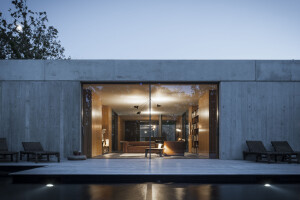Built between 1928 and 1931, the Ville Savoye represents the bases of modern architecture (Le Corbusier’s “five points”) and is one of the most well-known example of the International Style.
Originally built for the Savoye family, it took only one year to build but two more to be habitable. It became property of the French state in 1958, and after surviving many plans of demolition, it was designated as an official French historical monument in 1965, being this atypical since Le Corbusier was still alive at the time.
Le Corbusier designed his villas of the 1920s bearing in mind that each and every element included had to be justified both in design and urban terms. In this particular project, the architect was provided with an almost clean slate: the owners wanted a summer house with space for cars and an extra bedroom, and the plot they had was a green field next to a wooded area.
On the ground floor he located the main entrance hall, ramp and stairs, garage, chauffeur and maid's rooms. At first floor the master bedroom, the son's bedroom, guest bedroom, kitchen, salon and external terraces.
Thanks to the privileged location of the project, Le Corbusier was able to think and design each area based on criteria such as a light and orientation: the salon was oriented to the south east whilst the terrace faced the east. The son's bedroom faced the northwest and the kitchen and service terrace were on the southwest. On the second floor a series of sculpted spaces formed a solarium.
It was the last project where his five principles were put over the need of the occupants. Therefore, the house marked the end of a phase in his design thinking as well as being the last of a series of buildings dominated by the colour white.




























